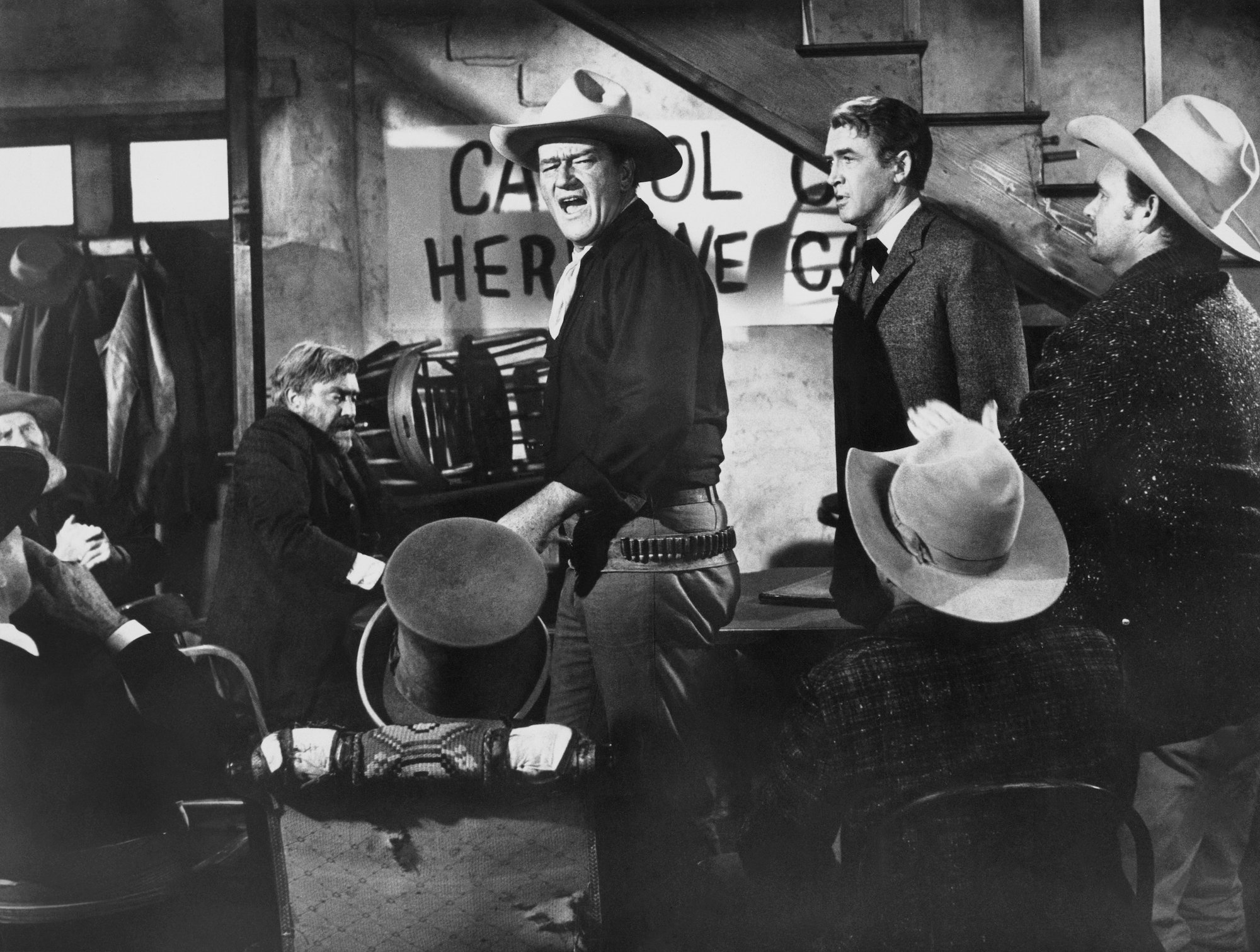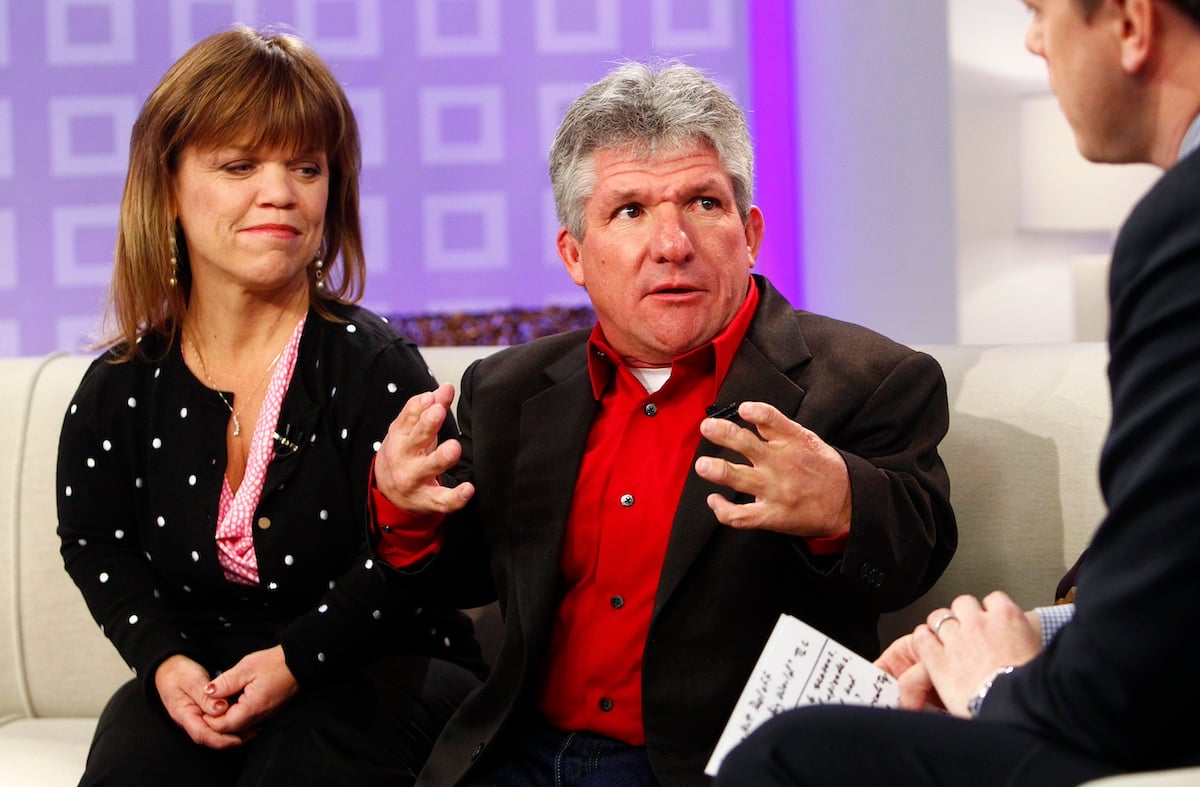A John Wayne Movie Classic Actually Reduced His Role From the Story It’s Based On
The John Wayne movie classic The Man Who Shot Liberty Valance has many memorable moments. The most noteworthy is the whole theme of “print the legend.” Wayne makes an impression as Shinbone cowboy Tom Doniphon, who played a pivotal role in the life of Senator Ransom (James Stewart). It turns out the adaptation of Dorothy M. Johnson’s short story gave Doniphon even less to do in the movie, but Wayne still made those moments count.
[Warning: This article contains spoilers for The Man Who Shot Liberty Valance.]

Paramount Home Entertainment is releasing The Man Who Shot Liberty Valance on 4K UHD on May 19. The 4K edition makes the black and white movie so sharp that the shadows in the title shooting scene are extra dark and moody. In the bonus features, historian Scott Eyman explains how the adaptation reduced Wayne’s role.
‘The Man Who Shot Liberty Valance’ story became a John Wayne’s movie
Adapting a short story into a two hour film often requires embellishing the source material. The Man Who Shot Liberty Valance actually streamlined it. Scott Eyman wrote a biography of director John Ford, so he knew all about the differences between the story and the film.
“The point of the story is basically the same point as the film,” Eyman said. “The execution is quite different. Ford and his writers altered one crucial aspect. In the story, the John Wayne character is kind of the fairy godfather to the Jimmy Stewart character, keeps nudging him along on the road from frontier lawyer to United States senator, constantly showing him the way and helping him out.”
‘The Man Who Shot Liberty Valance’ isn’t completely a John Wayne movie
The western begins with Ransom attending the funeral of Doniphon. When reporters ask how he knew Doniphon, the story flashes back to Ransom’s arrival in Shinbone. Outlaw Liberty Valance (Lee Marvin) roughed him up and terrorized the town.
When Doniphon was around, that was enough to keep Valance in line. Doniphon tried to convince Ransom to pick up a gun to defend himself, but Ransom wanted to use the law to address Valance. Finally, Valance confronted Ransom in the street. Ransom pulled the trigger of his gun and shot Valance dead, or so it seemed.
At the end of the film, Doniphon reveals he was standing in the shadows and fired his gun at the same time. Now, it makes much more sense that experienced gunslinger Doniphon hit his target than amateur shooter Ransom. But, Doniphon let Ransom have the credit, and the heroic act set him on a course for political success. When the reporters heard the truth, they killed the story, stating, “When the legend becomes fact, print the legend.”
The Man Who Shot Liberty Valance is both a Wayne movie and a Stewart movie. Both have equal parts, though the story centers around Stewart’s character with Wayne’s coming in for backup.
‘The Man Who Shot Liberty Valance’ made its point
The film adaptation made its point without making Doniphon directly involved in every aspect of Ransom’s life. It proved to be a signature role for Wayne, too.
“That doesn’t happen in the film,” Eyman said. “Basically, the John Wayne character in the film commits two acts that alter Ransom Stoddard’s life and that’s all and that’s enough. So it made the Wayne character a little less proactive in the film as opposed to the story.”


